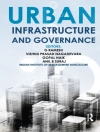Since the discovery of graphene, two-dimensional nanomaterials including Transition metal dichalcogenides (TMDCs), Hexagonal Boron Nitride (h BN), non-layered compounds, black phosphorous, and Xenes with large lateral dimensions, have emerged as promising candidates for heterogenous electrocatalysis owing to their exceptional physical, chemical, and electronic properties. The tremendous opportunities of using 2D nanomaterials in electrochemical CO2 reduction arises from their unique properties and vast number of applications. Covering the fundamentals, properties, and applications, all aspects of 2D nanomaterial composites within carbon dioxide conversion are discussed. The industrial scale-up and new challenges that exist in the field of electrochemical reduction of carbon dioxide will also be presented. With chapters written by internationally recognized researchers, this state-of-the-art overview will serve the growing interest amongst academic and industrial researchers in understanding 2D nanomaterials composites, their hidden interfaces and nanoscale dispersion of the metal oxide with nanocomposites for specific uses in carbon dioxide conversion to chemicals for fuel applications. This book will be of interest to graduate students and researchers in materials science, energy, and environmental science, as well as those in industry.
Table des matières
A Fundamental Approach Towards Carbon Dioxide Conversion to Chemicals and Fuels: Current Trends for CO
2 Utilization Technologies;Synthesis and Characterization of Two Dimensional Materials;Synthesis of Two-dimensional Hybrid Materials, Unique Properties, and Challenges;CO
2 Conversion to Chemicals and Fuel Cells Using Renewable Energy Sources;Two-dimensional Metal Oxide Nanomaterials for Electrochemical Conversion of CO
2 into Energy-rich Chemicals;Two-dimensional Based Hybrid Materials for CO
2-to-fuels Electrochemical Conversion CO
2 Process;Two-dimensional Nanomaterials Design and Reactor Engineering of Different Methods for CO
2 Electrochemical Conversion Process;Photoelectrochemical CO
2 Conversion Through the Utilization of Non-oxide Two-dimensional Nanomaterials;Photocatalytic Conversion of CO
2 into Energy-rich Chemicals by Two-dimensional Nanomaterials;Two-dimensional Based Hybrid Materials for Photocatalytic Conversion of CO
2 into Hydrocarbon Fuels;Catalytic Thermal Conversion of CO
2 to Fuels Using Two-dimensional Nanomaterials;Oxidative Dehydrogenation of Ethane to Ethylene Over Two-dimensional Nanomaterials Catalysts Using CO
2;A Comparative Study of 0D, 1D, and 2D Nanocatalysts Towards CO
2 Conversion;CO
2 Capture and Conversion Using Different Renewable Sources;CO
2 Capture by Functionalized Two-dimensional Nanomaterials; Conversion of CO
2 into Energy Dense Chemicals and the Commercialization Using Two-dimensional Nanomaterials as Catalysts
A propos de l’auteur
Dr. Aboubakr M. Abdullah is currently the Hydro/Qatalum Chair Professor at the Center for Advanced Materials at Qatar University since 2017. He has more than 26 years of experience in chemistry and materials science and engineering Research & Development, Industrial consultations, and project management since. He was awarded his bachelor’s and Master’s degrees in 1997 from Cairo University, Egypt and a Ph.D. degree from Pennsylvania State University, the USA in 2003. Besides his current position, he worked at Cairo University, Tokyo Institute of Technology, Calgary University, Egypt-Japan University of Science and Technology. He has published more than 100 peer-reviewed and 50 conference proceedings articles in the materials, energy, and environment research field in addition to one book chapter and filed and disclosed several intellectual properties. Furthermore, he has supervised many young professionals at the Master’s and Ph.D. levels. His research interests including but not limited to energy conversion, water treatment, photocatalysis, and corrosion science and engineering.












